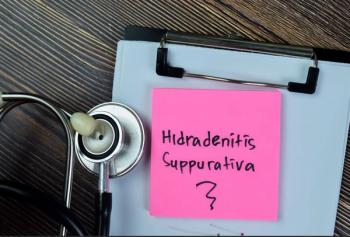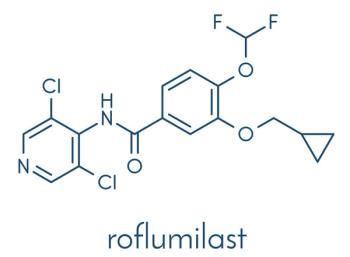
Cutaneous Calcinosis in a Child With Tertiary Hyperparathyroidism
An 11-year-old boy who was receiving continuous ambulatory peritoneal dialysis because of end-stage renal disease secondary to membranoproliferative glomerulonephritis was hospitalized with hypocalcemia 2 days after subtotal parathyroidectomy. Before the surgery, multiple lesions were noted on the child's thighs (shown here), upper arms, and abdomen. The lesions, some with calcium deposits, were hard and painful. A biopsy of the lesions revealed histologic findings consistent with cutaneous calcinosis.
An 11-year-old boy who was receiving continuous ambulatory peritoneal dialysis because of end-stage renal disease secondary to membranoproliferative glomerulonephritis was hospitalized with hypocalcemia 2 days after subtotal parathyroidectomy. Before the surgery, multiple lesions were noted on the child's thighs (shown here), upper arms, and abdomen. The lesions, some with calcium deposits, were hard and painful. A biopsy of the lesions revealed histologic findings consistent with cutaneous calcinosis.
Surgery was performed because of tertiary hyperparathyroidism--parathyroid hormone (PTH) level of 1552 pg/mL-and persistent hypercalcemia (calcium corrected for albumin level of 11.9 mg/dL). The preoperative serum phosphorus level was 7.5 mg/dL.
Postoperative laboratory values included an ionized calcium level of 3.45 mg/dL; total calcium, 6.6 mg/dL; albumin, 2.6 g/dL (corrected calcium, 7.72 mg/dL); phosphorus, 2.6 mg/dL; and PTH, 19 pg/mL.
Nerissa C. Kreher, MD, and Emily Walvoord, MD, of Indianapolis write that soft tissue calcification is a known complication of end-stage renal disease. High levels of calcium x phosphate product lead to the formation of hydroxyapatite crystals that are deposited in the skin and other tissues. Parathyroidectomy decreases PTH levels, thereby decreasing the calcium x phosphate product.
Hypocalcemia after parathyroidectomy is caused by the rapid uptake of calcium by the skeleton, referred to as "hungry bone syndrome." End-stage renal disease initially leads to secondary hyperparathyroidism because of a combination of hyperphosphatemia and mild hypocalcemia. Tertiary hyperparathyroidism occurs when the parathyroid glands become autonomous as a result of uncontrolled secondary hyperparathyroidism.
Cutaneous calcinosis often resolves with parathyroidectomy. This child was discharged after 5 days, and supplemental calcium (calcium carbonate, 13,500 mg/d) and calcitriol (3 µg/d) were initiated. Three weeks later, the calcifications had diminished and the calcium and PTH levels had increased.
Newsletter
Enhance your clinical practice with the Patient Care newsletter, offering the latest evidence-based guidelines, diagnostic insights, and treatment strategies for primary care physicians.



















































































































































































































































































